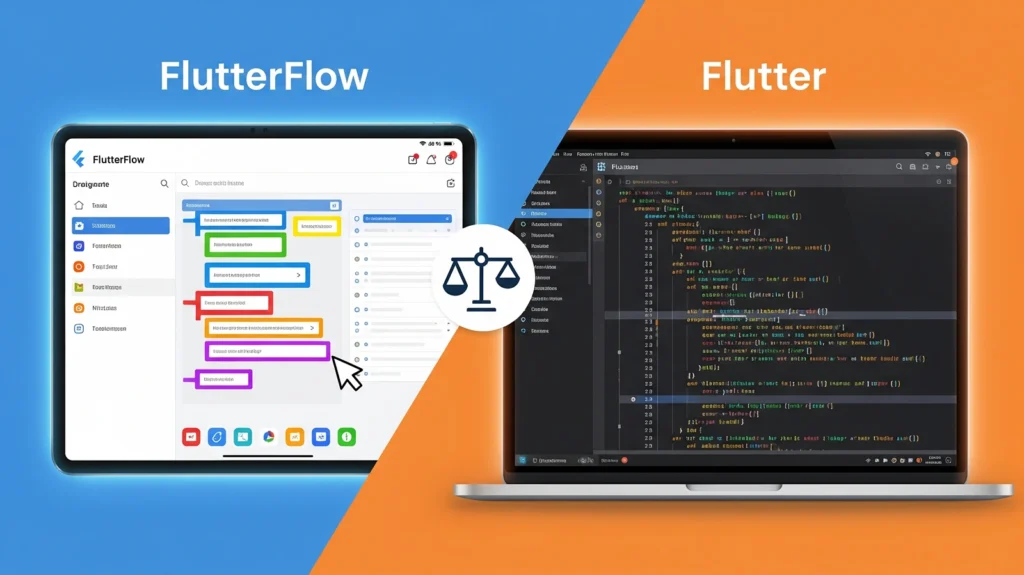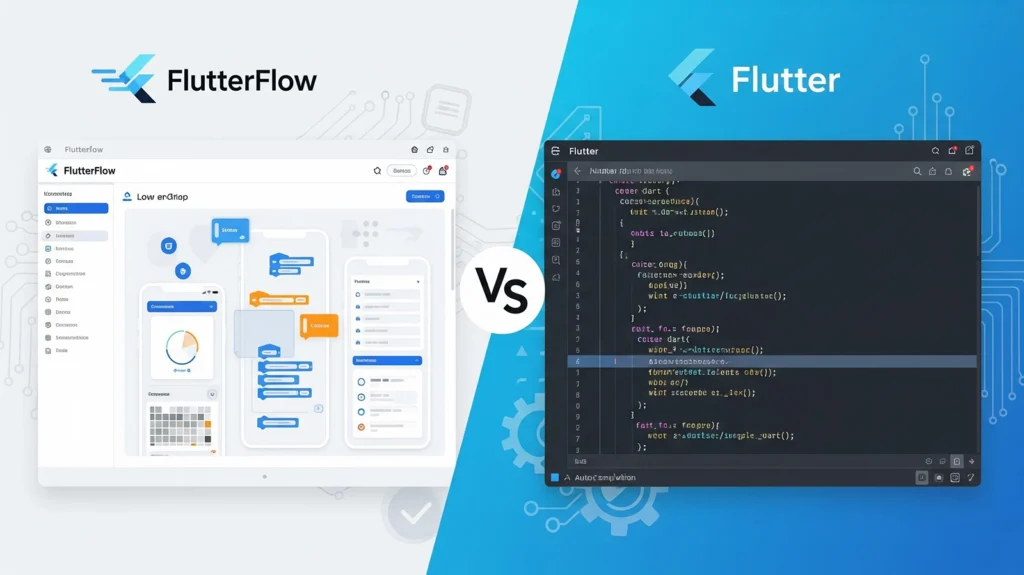
Flutter
- What it is: A coding framework made by Google.
- How it works: You write code in the Dart language.
- Who uses it: Developers who can code.
- Power:
- You can build any kind of app (mobile, web, or desktop).
- Complete control over design, logic, and performance.
- Requires programming knowledge.
FlutterFlow
- What it is: A no-code/low-code tool built on top of Flutter.
- How it works: You drag and drop buttons, images, and forms instead of writing all the code.
- Who uses it: Designers, entrepreneurs, or beginners who don’t want to code much.
- Power:
- Faster to build basic to medium-complex apps.
- Generates Flutter code in the background.
- It may have limitations compared to writing complete Flutter code.

Comparison
| Feature | Flutter | FlutterFlow |
| Coding | Needs coding (Dart) | Drag & drop, little coding |
| Speed | Slower to start, but unlimited flexibility | Faster to start, suitable for MVPs/prototypes |
| Control | Full control over everything | Limited by FlutterFlow’s features |
| Who should use | Developers | Non-coders, startups, designers |
| Output | Apps for iOS, Android, web, and desktop | Apps for iOS, Android, web (exports Flutter code) |
In short:
- Flutter = build a house from scratch (bricks, cement, paint) → complete control, but harder.
- FlutterFlow = use Lego blocks → faster, easier, but only works with the blocks they give you.
